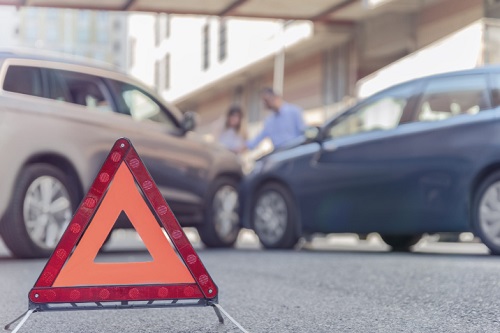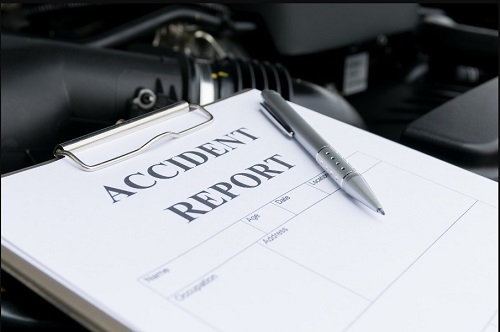Key Insights:
- It may take a while for certain injuries to become noticeable following a car accident.
- Even if you don’t see any damage after a car accident, you could still find yourself involved in legal proceedings.
- Consulting with an attorney specializing in car accidents can assist you in recognizing and shielding yourself from any legal risks.
- When considering car accidents, images of dented vehicles, shattered glass, and deployed airbags often come to mind. However, some incidents result in minimal damage, such as a slight bump in a parking lot. What’s the best approach to handle such circumstances?
It’s crucial to remember that any claim related to a car accident requires some form of damages for support; without them, compensation is unlikely. Nevertheless, damages can sometimes be ambiguous. If you find yourself in a car accident with no visible damage and are uncertain about your next steps, consider the following key points as you plan your course of action, starting with an overview of potential damages you may claim.
What Are ‘Damages’ in a Car Accident Lawsuit?
Although a car accident lawsuit can involve various legal claims, the foundation of most car accident cases rests on a negligence claim. A negligence claim asserts that another person’s unreasonable actions resulted in your harm—like a tailgater who was so close that they were unable to stop in time before crashing into you.
However, to prevail in a negligence claim, you must claim and show damages. While damages typically pertain to the obvious physical destruction of your vehicle—even minor damage—legally, the term encompasses a broader range and can incorporate:
- Physical injuries (such as cuts, bruises, or broken bones)
Suffering and pain - Emotional trauma (including anxiety, depression, and PTSD)
- Mental anguish
- Loss of income or wages due to missed employment
- Medical costs
- Loss of companionship
Given its extensive nature, damages may include injuries that take time to become apparent. For instance, the impact of a car accident may lead to PTSD, which could take years to diagnose and may involve fluctuations over time. Since car accidents are the primary cause of PTSD, such injuries may be more prevalent than anticipated.
Car Accident Scenarios with No Damage: Three Key Considerations
As you navigate the aftermath of a car accident, there are essential steps to take on-site to safeguard yourself and others. This includes seeking medical attention if required and documenting the scene to collect evidence for law enforcement or insurance firms reviewing the accident. However, the absence of visible damage at the scene doesn’t necessarily mean you will avoid the insurance claim process or legal action.
1. You May Realize Damages Later
Legally, damages encompass much more than just vehicle repairs. An incident involving a slight bump with no damage—or even a situation where there was no contact with your vehicle at all—can still result in personal injuries.
How could this occur? Consider a scenario where a large truck narrowly avoids hitting your vehicle. The sight of the truck approaching might revive a past trauma or create a new one, leading to emotional distress or other psychological issues, or even induce a cardiac episode due to the stress experienced. These would be classified as damages even if there was only minimal damage to the car, or none at all.
As another instance, if the large truck missed your car but tragically struck another vehicle driven by a family member, you might still pursue damages through a wrongful death claim, even when your car remains unscathed.

What’s the crucial takeaway? You might still have grounds for a legal claim even if you were in an accident with no visible damage or one that was minor. The absence of a police report at the scene may not capture any injuries that could become apparent weeks, months, or even years later. Therefore, it’s essential to keep an eye on your health and well-being following an accident and to seek medical attention if necessary.
Key points:
- Don’t take the lack of visible damage to your vehicle as a sign that there are no damages at all.
- Be mindful of your mental and physical health after an accident, and pursue medical care if issues arise.
2. Another Driver May Find Damages Later On
Think of the previous scenario in reverse. Even if injuries don’t show up for you after a car accident, another driver involved might discover injuries later on. If this occurs, you could become part of an insurance claim or potentially face a lawsuit related to the accident.
While the outcome is unpredictable, you can safeguard yourself by documenting the scene as thoroughly as possible right after the incident. Capture photos and videos of the area and the vehicles involved. Jot down your account of the event as soon as possible after the accident, and if appropriate, consider checking on other drivers afterward to see how they are doing.
Key points:
- Document the accident scene even if there seems to be no damage or only minimal damage (to vehicles, roadways, or other property).
- Write down your recollection of the event as closely in time to the accident as you can.
3. Even Without Damages, You Might Still Be Part of the Legal Process
Being involved in a car accident with no damage doesn’t mean you won’t be brought into a claim or lawsuit. For instance, you might receive a citation for traffic violations, or you may be called as a witness if another driver gets cited.
If your vehicle was undamaged, you could still be regarded as a witness in claims or litigation involving other parties in the accident. In such a case, you might receive a subpoena for documentation or for your testimony in a deposition where you’ll be questioned about your direct knowledge of the incident.
In such situations, consider consulting with an attorney for guidance. Depending on what you share and the testimony you provide, you might find yourself more involved in the case. For instance, if you confess to distracted driving—or if phone records reveal that you were texting right before the accident—you could be named as a defendant in the lawsuit if another party can connect that to the incident’s cause.
Key points:
- Even if you sustained minor damage or no damage, you could still be involved in insurance claims or lawsuits initiated by others in the accident.
- Think about seeking legal advice even if you are merely acting as a witness in the situation.
- Need Legal Assistance for Car Accidents with No Damage?
- Car accidents occur, and walking away without damage is an ideal outcome, but it doesn’t always conclude the matter. If you’ve been involved in a car accident, even one with minor damages, it may be wise to consult with an experienced attorney who can evaluate your potential claims or liabilities.
How to Report a Traffic Accident to the Police
Notifying law enforcement about a traffic collision is one of your initial chances to share the details of your incident.
Why is this important? Your capacity to remember and record essential aspects of your accident, particularly while they’re still vivid in your memory, can influence your ability to recover damages later on.
Below is a summary of how to notify the police about a traffic crash, along with some general insights throughout the process. If you’ve been involved in a car accident, it may be wise to consult with a knowledgeable attorney to grasp how the law pertains to the specific circumstances of your case.
When to Contact the Police to Report an Accident
Your main concern following an accident should be the safety of yourself and others. This might involve moving away from a hazardous part of the road, like a blind curve, or ensuring that first aid is provided.
Subsequently, you will need to determine if you should call 911. For minor vehicle accidents, a police report is typically not necessary, allowing drivers to exchange insurance and contact details, document the scene as accurately as possible, and continue on their way. Nonetheless, what constitutes a “minor” accident can sometimes be unclear. This is often defined by the motor vehicle regulations in your state, which frequently establish specific reporting thresholds.
For instance, numerous states, including California, New York, and Texas, mandate reporting a traffic collision that results in any injury or in property damage exceeding $1,000. In Florida, the threshold for property damage is set at $500. Make sure to review your state’s motor vehicle laws to understand when you must report an accident to law enforcement.
What to Do If You’re Involved in a Hit-and-Run
If you find yourself in an accident where the other driver flees the scene, it’s crucial to call 911 to report the incident. Even if you lack identifiable information about the other vehicle, a police report can assist you as you work through your insurance claim. Here are some aspects to bear in mind when deciding how to report a hit-and-run to the police.
Call 911 Immediately
Promptness is vital in a hit-and-run situation. If it occurs while you’re driving and you can safely pursue the other vehicle, use that opportunity to provide valuable information to the dispatcher, such as the make, model, color, and license plate number of the car, along with its direction and details regarding the driver and the accident.
If You Can’t Safely Follow the Driver, Stay at the Scene
Even though the other driver may have departed the accident site, you want to avoid giving them any reason to claim that you hit their vehicle and then left.
How to Report a Traffic Accident When You Contact the Police
When you report a traffic accident, remember that the dispatcher is a trained professional who knows how to inquire about and listen for crucial details in a specified order. They often manage several communications simultaneously while speaking with you, sending information to emergency response teams, and coordinating with other dispatchers. It’s essential to provide them with the necessary information promptly and allow them to perform their duties.
Allow the Dispatcher to Guide the Conversation
Follow the dispatcher’s questions and respond to them as accurately as you can. If you are prompted to provide further details, take that chance to share additional facts as they come to mind. Whenever possible, present the sequence of events in chronological order to assist the dispatcher in piecing the information together. Be cautious not to overwhelm them with a barrage of unrelated details all at once, and don’t presume that silence means they aren’t understanding or paying attention. They might be utilizing that time to collect information and coordinate with first responders.
Stick to the Facts
When informing about a traffic accident, steer clear of speculating about another driver’s motives or parts of the incident that you didn’t witness. This can be challenging, particularly amid heightened emotions (like in road rage scenarios), but focusing on what you directly observed will make you more credible to both the dispatcher and the responding officers.
You should also refrain from admitting responsibility at the scene. Even if you believe you were at fault, you may not fully comprehend all the facts, including the behaviors of other drivers preceding the accident. In some states, laws regarding contributory negligence prevent car accident victims from recovering any damages if they played a role in causing the accident in any way.
What to Do While Waiting for the Police
While you wait for the police to arrive, keep in mind that you are not obligated to exit your vehicle if your injuries make it difficult or if you feel unsafe for any reason. The 911 operator will typically stay on the line with you until the officers arrive, so it’s wise to inform them if you plan to remain in your vehicle and why. If another driver is insisting on your information, kindly remind them that the police can gather this information for everyone upon their arrival.
If you feel comfortable getting out of your car, there are actions you can take to help you record the scene.
- Exchange Contact and Insurance Information With Other Drivers
- Although the responding officers will gather this information when they get there, you might have to wait several days or weeks to access it in a police report if you don’t gather it yourself. Be sure to photograph any documents shared with you by other drivers so you can review them later in case you missed important details. Pay attention to expiration dates, especially on proof of insurance documents, to ensure you have current information.
Document the Accident Scene
After notifying 911 about a traffic accident, take a moment to look around, capture photographs or videos, and document the accident location. Start by examining the immediate area, which includes any damage to vehicles or the roadway and the condition of drivers and passengers. After that, you should expand your focus to document elements like:
- Weather conditions
- Traffic intensity
- Road conditions or potential hazards
- Nearby freeway exits or street names
- The placement of traffic signs and lighting on the road
- The estimated time of significant events leading up to the accident
- Nearby businesses or residences that may possess video surveillance
- Names and contact information of bystanders who witnessed the incident
How to Talk to the Police After an Accident
Being open and reasonable with the responding officers will enhance your credibility with them. If you’re still feeling shocked from the accident and are experiencing a racing heart, inform them so they don’t misinterpret your excitement and can adjust their approach if needed.
When sharing information, remember that they have already received some details based on your 911 call, but that doesn’t mean they are aware of all the specifics you reported. Take your time to walk through the sequence of events again. If you’ve spotted any witnesses, let the officers know so they can interview them as well. Here are a few additional points to consider.
Don’t Assume That Everything You Say Is Recorded Word-for-Word
Even though the responding officers may have their body cameras activated, there’s no assurance that everything you communicate will eventually appear in the police report. When they compile their report, officers sift through the information given by all parties primarily to identify what’s relevant for determining:
- The conditions that led to the accident
- The primary cause of the accident
- Whether any laws were broken
- For this reason, it’s crucial to restate important facts to the officers and provide them with confirming witnesses when possible. If your case proceeds to an insurance claim or litigation, it’s unlikely that the responding officers will recall anything about your accident beyond what is documented in their final report. The more you can assist them in concentrating on crucial details at the scene, the better.
Know How to Retrieve the Police Report Before They Leave
After reporting a traffic incident, ensure that you receive any report numbers or additional details necessary for requesting a copy of the police report. Usually, the date and time of the accident along with the responding officer’s badge number may suffice. However, if you plan to retrieve your traffic collision report online, you might require further identifying information.
Following Up With the Police After Reporting an Accident
Acquiring your police report promptly is crucial. Although the report may not serve as evidence in legal proceedings—some states, like California, specifically forbid the use of accident reports by law—it plays a significant role for insurance companies in assessing fault and coverage. Here are several important considerations.
Request Copies of Your 911 Call and Body Cam Video/Audio Records
While you await the report, inquire with your local police department about the process for obtaining additional records. Such records can be valuable additions to the police report, particularly if important details are omitted or if there is a conclusion you believe to be incorrect.
Review Your Traffic Accident Report Carefully
Since the report is often critical to the insurance claim process, it’s essential to examine its contents thoroughly. Does it incorrectly indicate the accident’s location? Did it overlook any witnesses? In certain instances, you may wish to follow up with the responding officers regarding inaccuracies or if you possess additional evidence that was not included. The final determination of fault in a traffic report carries considerable significance in the insurance claim process, but it can be supported by other forms of evidence.
Filing a Claim With Your Insurance Company
Once you report a traffic accident, it’s important to inform your insurance company without delay. Even if you lack all necessary information or records, your insurance can kick off the claim process and inform you of your coverage and the subsequent steps to take.
Speak With Your Insurance Carrier First, Even if the Other Driver Was at Fault
It’s generally wise to notify your insurance company about the accident, even if you were not at fault. Often, they can offer valuable guidance before you begin interactions with the other driver’s insurance company. Additionally, depending on your policy, your insurer may be obligated to arrange for immediate repairs or provide you with a rental car while another driver’s insurance processes the claim.

Provide Your Adjuster With the Police Report Lookup Information
Even if you’re still waiting for the final police report, it’s prudent to provide your insurance company with details on how to access the report. Your adjuster may be able to retrieve the report on your behalf and offer their evaluation of its findings before you engage with the insurance adjuster from the other driver’s side.
Deciding Whether You Need a Lawyer
Whether you’re navigating the insurance claims process or involved in a car accident lawsuit, crucial timelines apply, and essential rights might be forfeited if not exercised or if you settle prematurely. Even if you believe your accident was minor, you might be unaware of hidden injuries or other factors that a lawyer or medical expert can help you uncover. Here are some key points as you look for attorneys.
Remember That You Can Consult With Attorneys Before Hiring Them
A legal consultation provides an opportunity to discuss the specifics of your car accident with an attorney who can offer an initial evaluation of your case, including its strengths and weaknesses, as well as an estimate of your damages. Some lawyers even provide free or reduced-price consultations. It’s never too soon to consult with an attorney after reporting a traffic accident, even if you have already begun the insurance claim process, which an attorney can help you manage.
Ask About Their Experience With Car Accident Cases Like Yours
Attorneys focus on various practice areas. You’ll want to ensure that any lawyers you consider hiring possess the right experience. In some instances, for example, you may seek an attorney who specializes in motorcycle or pedestrian accidents. In other cases, you may prefer an attorney with expertise in cases involving vehicle product defects.
How to Talk to an Insurance Adjuster
Insurance adjusters handle claims from individuals reporting traffic accidents daily and are skilled at gathering information. They may seem eager to resolve the claim quickly, but you are not obligated to rush. If you require medical attention due to your accident, understand that you have time to get the necessary treatment. Your ultimate deadline is the statute of limitations for your accident, which denotes the time frame for filing a lawsuit. These timelines differ by state.
If you find yourself speaking with another driver’s insurance adjuster, keep these points in mind.
Just Because an Adjuster Sends You a Form Doesn’t Mean You Should Sign
If you do not have legal representation, an adjuster will approach you for additional information about the accident and the damages you incurred. They may casually provide you with medical waiver forms, claiming they’re needed to evaluate your injuries, but signing them could grant them broad access to your medical records, including those unrelated to your car accident.
You’re Not Required to Provide a Recorded Statement
An adjuster might lead you to believe that a recorded statement is essential for processing your claim, but you are not obliged to provide one.


